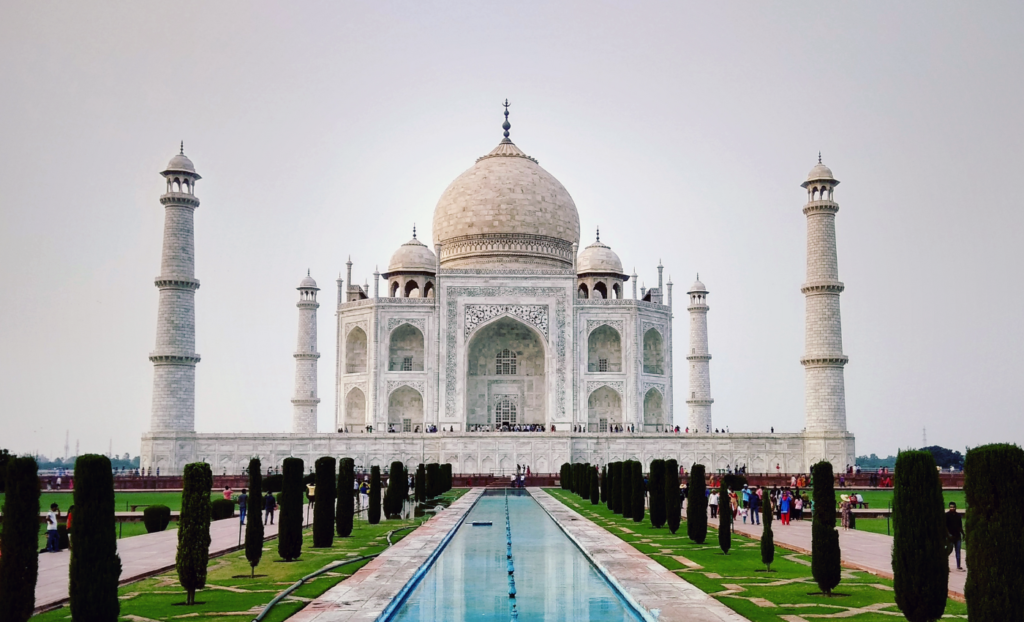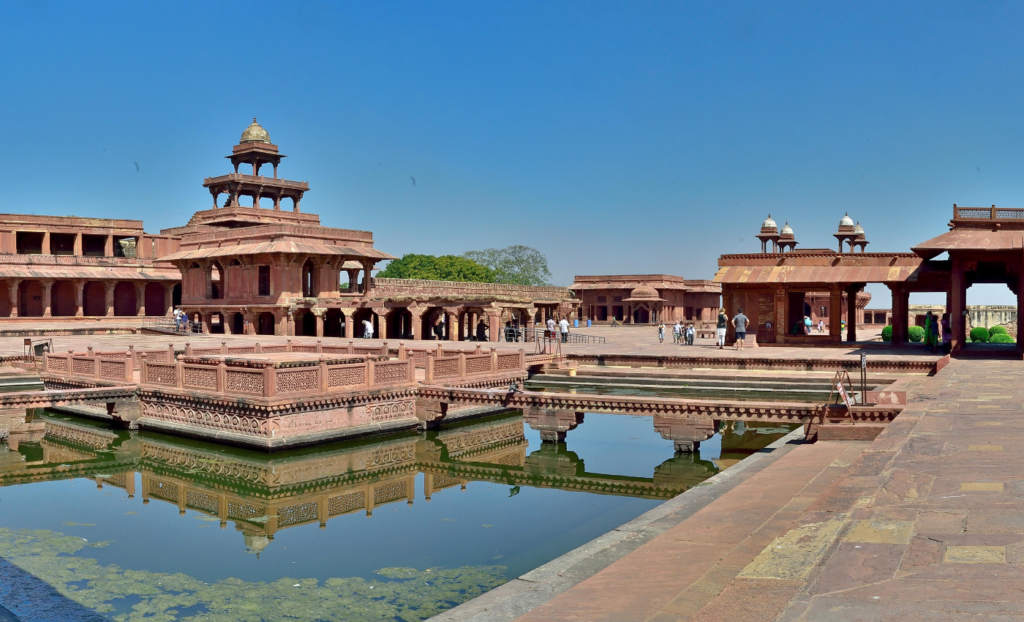Agra, a city rich in cultural and historical significance, is a reminder of India’s glorious past. UNESCO recognized as a World Heritage Site, Agra is tucked away along the banks of the Yamuna River and is home to the famous Taj Mahal, a symbol of eternal love that draws millions of tourists there every year.
Historical Significance of Agra
Agra’s historical importance can be traced back millennia, with successive rulers influencing its cultural heritage. The Mughals, in particular, left an unmistakable imprint on the city’s architecture, transforming it into a living tribute to their magnificence.
The Magnificent Taj Mahal

Undoubtedly the jewel in Agra’s crown, the Taj Mahal is an architectural marvel that captivates the world. Recognized as a UNESCO World Heritage Site, this ivory-white mausoleum was built by Emperor Shah Jahan in memory of his beloved wife Mumtaz Mahal.
Agra Fort: A Stalwart Witness to History

Adjacent to the Taj Mahal, Agra Fort stands as a stalwart witness to historical events. Built by Emperor Akbar, this imposing fortress reflects a blend of Islamic, Persian, and Indian architecture, showcasing the might of the Mughal Empire.
Fatehpur Sikri: The Abandoned City

Just a short distance from Agra lies Fatehpur Sikri, an abandoned city that once served as the Mughal capital. Despite its abandonment, Fatehpur Sikri boasts architectural wonders like the Buland Darwaza and the Jama Masjid.
Local Culture and Cuisine
Beyond its architectural marvels, Agra is a melting pot of diverse cultures. The city’s vibrant traditions and local festivals add a unique charm, while its culinary delights, including the famous Petha, tantalize the taste buds of visitors.
Agra’s Handicrafts and Artisans
Agra’s rich tradition of handicrafts is a testament to the skill and craftsmanship of its artisans. From intricate marble inlays to exquisite leatherwork, these crafts contribute to the city’s cultural identity.
Challenges and Preservation Efforts
Despite its historical significance, Agra faces challenges such as pollution and degradation of monuments. Various conservation initiatives strive to preserve the city’s heritage for future generations.
Tourism in Agra
Agra’s popularity as a tourist destination is undeniable. The influx of tourists contributes significantly to the city’s economy, supporting local businesses and creating job opportunities.
Accommodations and Travel Tips
For a fulfilling visit to Agra, choosing the right accommodation is crucial. From luxury hotels to budget-friendly options, Agra offers a range of choices. Travelers should also consider tips like visiting popular sites during non-peak hours for a more enjoyable experience.
Lesser-Known Gems in Agra
While the Taj Mahal and Agra Fort are must-visit attractions, exploring lesser-known gems like Mehtab Bagh and Akbar’s Tomb provides a more comprehensive understanding of Agra’s historical landscape.
Agra’s Festivals and Events
Agra’s cultural calendar is dotted with vibrant festivals and events. From the Taj Mahotsav to Diwali celebrations, these events showcase the city’s lively spirit and cultural richness.
Sustainable Tourism Practices
As Agra continues to attract visitors, the importance of sustainable tourism cannot be overstated. Responsible travel practices, such as minimizing environmental impact and respecting local traditions, play a crucial role in preserving Agra’s heritage.
Agra’s Future: Balancing Tradition and Modernity
As Agra evolves, striking a balance between tradition and modernity becomes imperative. Preserving the city’s cultural heritage while embracing contemporary developments ensures a harmonious future for Agra.
Conclusion
In conclusion, Agra’s allure lies not only in its iconic monuments but also in the rich tapestry of its culture and traditions. Whether exploring the timeless beauty of the Taj Mahal or savoring the local cuisine, Agra promises an unforgettable experience for every traveler.
FAQs about Agra
- Q: How much time should I allocate for visiting the Taj Mahal?
- A: Plan to spend at least 2-3 hours to fully appreciate the beauty of the Taj Mahal and explore its surroundings.
- Q: Are there any restrictions on photography at historical sites in Agra?
- A: While photography is generally allowed, certain restrictions may apply at specific sites, so it’s advisable to check beforehand.
- Q: What is the best time of year to visit Agra?
- A: The months of October to March offer pleasant weather, making it the ideal time to visit Agra.
- Q: Are there guided tours available in Agra?
- A: Yes, guided tours are available for most historical sites in Agra, providing valuable insights into the city’s history.
- Q: Can I purchase local handicrafts directly from artisans in Agra?
- A: Yes, many artisans in Agra sell their handicrafts directly, providing an authentic shopping experience.



